“Humor Should Always be Challenging”
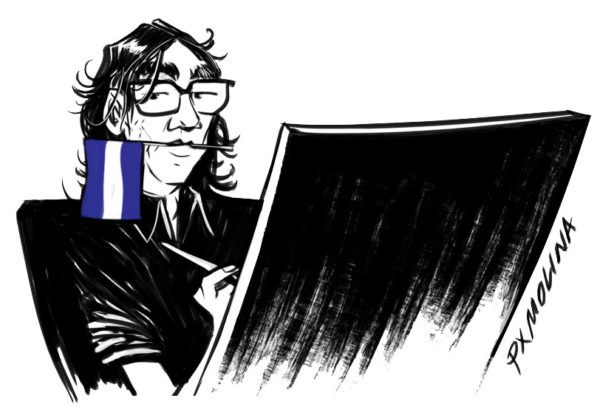
Cartoonist Pedro Molina talks about his evolution as a professional, the risks of his job and how he reflects on his own work
By Cinthia Membreño (Confidencial)
HAVANA TIMES – In the world of journalism, cartoonist Pedro Molina (Estelí, 1976) is known for being elusive when it comes to interviews. He prefers not to be photographed and, unless necessary, does not appear in videos. He describes himself as a person who does not talk much, but that depends on the subject.
When asked about his work, his creative process and the role of his profession in the face of power, Molina doesn’t stop talking. He feels comfortable talking about it, and about the process of introspection he has gone through to refine his humorous criticism in the course of his career.
For the third Nicaraguan to win the María Moors Cabot Award, the oldest international recognition in journalism, the insults he receives from different sectors of society work like a compass on the effectiveness of his work. He does not take them to heart because, otherwise, he would not be able to live.
In this interview, which has been condensed and edited for clarity, Molina describes his evolution as a professional, the risks of his profession and how he tends to reflect on how to improve his work.
In a cartoon you published a few weeks ago in CONFIDENCIAL, you satirized Juan Carlos and Laureano Ortega Murillo, who are both sons of the presidential couple. You referred to them as “the singing princes of El Carmen”. How did you come up with this idea?
I wanted to draw something related to the concerts that the regime organized to promote love in the midst of the coronavirus pandemic. I was looking for a title that could go with a cartoon I had already made, something to “tie” the image with. It occurred to me that Laureano and Juan Carlos are the “princes of the dictatorship”, but I wanted to turn that around and the phrase “the singing princes” came to mind.
As soon as I said “singing”, I remembered a parody made by Les Luthiers, an Argentine comedy group that I am a fan of. They usually referred to the famous children’s choirs that toured the world in the eighties, giving classical music performances. The parody was called “The singing children of Tyrol” (in Spanish: Los niños cantores del Tirol) and I said: Ah! Then they are the “singing princes of El Carmen”. That’s how I finished tying up the idea.
I added a musical note to the cartoon, as if it were a skull. I wanted to reflect what they do: they give the bad melody of the dictatorship, which is repression and death. It is a serious subject but wrapped in something humorous. That’s what the cartoon is trying to do.
Your criticism of the presidential family is a fairly recurrent theme. You have shown its most iconic characters as parasites or have highlighted their privileges, as in the case of Camila Ortega. How does the audience react to these cartoons?
When you talk about the most powerful family in Nicaragua, it is to be expected that people will connect more with that type of cartoon. An acquaintance of mine says that the Ortegas are “incalumniables”, (meaning: impossible to defame them) because there is nothing you can say about them that is not true. They are like a circus. They are ridiculous and extravagant, very incompetent, and on top of it all, proud to be so. They give you a pretty rich “mine” to extract ideas and comments from.
Juan Carlos Ortega has had quite a few run-ins with me on social networks because of the cartoons that I draw of his family.
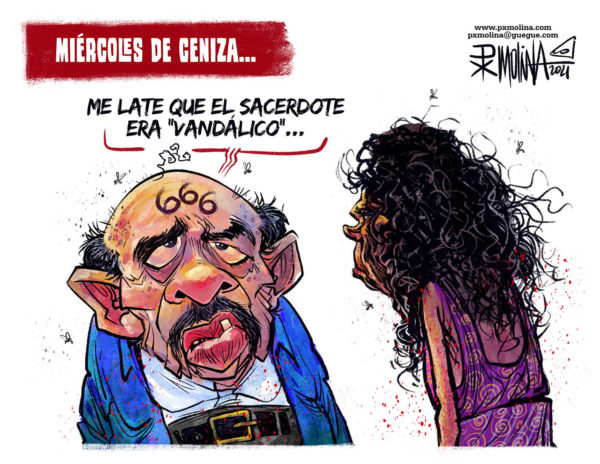
So, the Ortega-Murillo family do see your cartoons…
Of course. They do and it bothers them. But what they — and any other powerful group — have to understand is that this is something that comes with power. Before 2018, people would ask me why I drew about the regime most of the time. I would answer that, in any democracy, criticism is divided among all those who exercise power, but if you are centralizing all the power, you are centralizing all the criticism on yourself too. It is not a fixation, it is a natural response to the concentration of power of one or several people.
And when I talk about power, I am not only referring to the regime. There are groups in Nicaragua with a certain level of power that get upset when you make a cartoon about them, even if they have previously seen you as an ally. You can make a cartoon that they agree with one day and they think you’re a genius, and the next day you make one criticizing one of their “sacred cows” and immediately you are a shit, and mediocre.
Have you ever regretted making someone angry?
In my career I have angered a lot of people. It’s not that I regret it, but I do question myself as a professional when someone I didn’t want to piss off gets angry. When it comes to those I did want to anger and I make them drool with rage, I don’t care, but when there are sectors or people that my cartoon wasn’t directed at and they felt bad, either because they didn’t read it properly or because I lacked expertise and the idea wasn’t understood, I do question myself and think I should find a way to do better.
What are the strongest criticisms you have received about your work, either in CONFIDENCIAL, El Nuevo Diario or internationally?
It depends on what you take as criticism. If I were to take every insult that is prescribed to me as criticism, I would not be able to live. I have a collection of insults that I sometimes share on social networks. It is very long and you can find anything you can think of. I’ve been called everything, from “Central American necklace seller” (laughs) to right-winger, communist, capitalist, progressive, gay, sexist, feminazi.
The funniest part is that the terms are contradictory. Far from feeling bad, it shows that I have not managed to subscribe to any of the extremes of bigotry, or quasi-cult reading that people have within their belief systems.
Now, like any human being, I may have my preferences, inclinations or ways of thinking, but I believe it is my responsibility to challenge them. It’s not always easy in this day and age, because on social media we naturally look for the “little bubble” of people who think the same way we do.
Speaking of challenging your own beliefs, have you chosen not to do a particular kind of satire because your views on a topic have changed?
Absolutely. A clear example of what I used to do at the beginning of my career, in the 1990s, and that I don’t do anymore unless it’s absolutely supported within the metaphor, is to draw male politicians as cartoonists did between the 1950s and 1980s: to dress them as a housemaid, or as a woman doing household chores. At that time, if you wanted to see a certain leader ridiculed, to the point of showing him as someone without power, you would draw him like that.
Hmm, that’s shocking…
See? That scares you, but I grew up reading this kind of stuff. And there was a moment in which I consciously said, no more. A personal reflection comes from concluding that certain things don’t fit because you don’t find them humorous anymore.
The example I mentioned before does not work as a resource today, especially because of the role of women in society. However you get to the concept, it is obsolete for ethical and practical reasons. It is not appropriate. Those things have to remain in the newspaper’s archive. And so it happens with many other topics, such as racial sensitivity or sexual orientation.
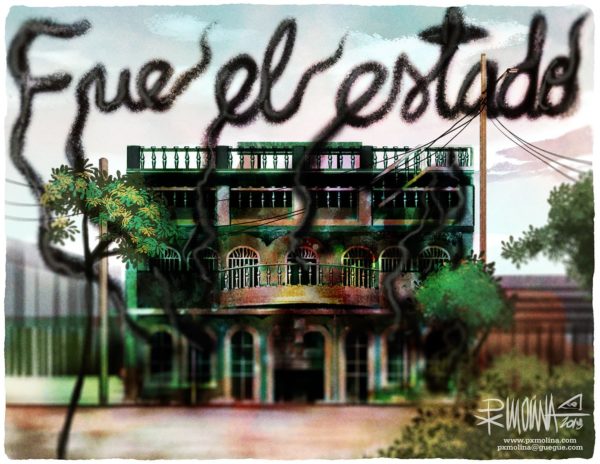
Besides your work as a cartoonist, you teach at a foreign university. What has surprised you the most about your students? What potential do you see in them and what subjects are they interested in portraying?
My students are dealing with issues that are close to them and that have a social repercussion in their lives. At one point in my course, I asked them to draw a topic that resonated with them. I wanted to see if they would talk about entertainment or social media, but they addressed the pandemic, political polarization, bigotry, things they were experiencing.
This makes you realize that young people know about these issues, but they need the tools that allow them to better analyze their contexts, and make them more accessible to them in their learning. Of course, there are young people who are oblivious to everything, but older people can also be like that.
On the other hand, this generation has a more difficult time because the people who are creating graphic humor on social networks today, have not yet found a model that allows them to capitalize their work. This slows down the professionalization of the new generation, but there are still people making cartoons, even if they can’t make a living out of it.
Being a cartoonist also implies facing danger. There have been cases around the world, in which the physical integrity of cartoonists has been affected. Some of them have faced trials or have been murdered for making political humor….
Yes. Perhaps the most important — and painfully close — case was the massacre of the Charlie Hebdo cartoonists in 2015. When I protested about it and said, “I am Charlie,” many people asked me if I had not seen the barbarities they had published and if I agreed with their work. I didn’t necessarily agree with everything they drew, but I think they had the right to judge for themselves what subjects they wanted to deal with and how they wanted to deal with them. And that one cannot, under any circumstances, let alone be censored, but rather be killed for it.
There are also cartoonists like Ali Farzat in Syria, who was kidnapped by paramilitaries of Bashar al-Assad’s regime outside his house, put in a car and had his hands beaten to stop him from drawing. Or Ramon Esono, from Equatorial Guinea, whose satire about his country’s dictatorship was banned, but also so successful that people photocopied it to pass it from hand to hand. He had fled from Equatorial Guinea, but eventually had to return to do some paperwork and as soon as he entered the country he was thrown in jail. He was imprisoned for six months, until international pressure was so great that he was released. These are recent cases, but there are many others. This is a profession that involves risks.
The creative process: talent and craft
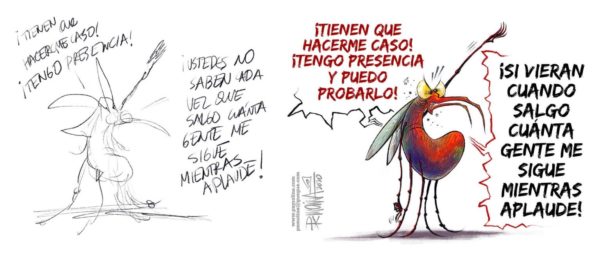
Pedro, your ingenuity and perseverance in creating daily cartoons is admirable. What does your creative process consist of?
The creative process is different for everyone. There are no formulas and it can be very chaotic. For example, sometimes I have an idea, a visual metaphor that I like, and I don’t have a subject to apply that metaphor to. So I write it down, and I make a sketch.
Other days it’s the other way around. I come up with a couple of dialogues, a joke that might work, but I don’t have an image to reinforce it. I write the joke as well. Then there are those wonderful days when everything works magically. When that happens, it’s like an epiphany. Everything is beautiful on those days, but there are other days in which I suffer.
You draw cartoons every day, how do you keep the rhythm?
Creativity is one part of it, but there is also the technical part. This profession has taught me that if I come up with ideas, it’s better to write them down and save them. Sometimes I come up with a marvelous idea when I’m showering, but when I want to sit down and draw it, and all I can do is to wonder: what was the idea? What was the combination of words?
That is unforgivable. You should always have something to write on, even on the bedside. A lot of times I’ve gotten up in the middle of a dream to write something down. Of all those times, 70% of it turns out to be crap the next morning. It has no head or tail (laughs), but the other 30% are usually good or at least useful things.
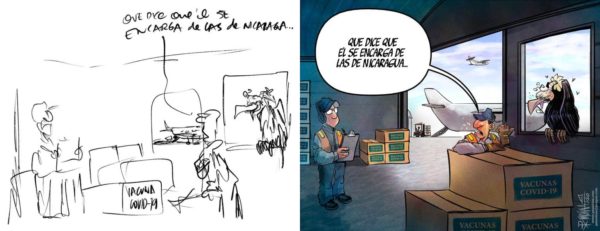
When you get to what you consider to be the final version of your cartoon, who edits you? Does someone tell you: “Hmm.. I’m not too sure about this joke”?
(laughs) I’m usually edited by the people around me, my immediate family for instance. I show them a cartoon because I want to know if it’s understood. That’s my first concern, not if the person agrees with me or not. And when I have doubts, I share the cartoons with some of my colleagues at CONFIDENCIAL.
One must be honest with oneself, especially in the situation Nicaragua is going through, because sometimes you can react with indignation or anger, or in a primitive way. Jeff Macnelly, an American cartoonist whom I admire and respect very much, used to say that his worst cartoons were the ones he drew out of indignation. He said that although people could connect with them, when he saw them afterwards, he concluded that he had rushed them and that there were ways to finish then in a more intelligent way.
Could you give an example of it?
A few months ago I drew a cartoon that talked about the dictator’s (Daniel Ortega) reputation as a rapist. In the original version, it showed his face with a penis-shaped nose. It was super explicit and the people I shared it with warned me that readers were not going to remember what I was trying to comment on, but the visual details. It made sense, the visual was sabotaging the idea.
I put the cartoon in the freezer and picked it up weeks later, wondering how to solve that challenge. What I did was to draw the dictator in profile. If you look closely, you can see the penis represented in the nose, the testicles forming the mouth and the hair on the testicles forming the mustache. If the reader is interested enough to give you two or three seconds for it to “click”, they feel rewarded because they understood the joke. That solution did not get rid of my idea.
—–
Ana María Sampson, a Communication Science student at the University of Amsterdam and member of the Confidencial staff, translated this article from Spanish to English.





